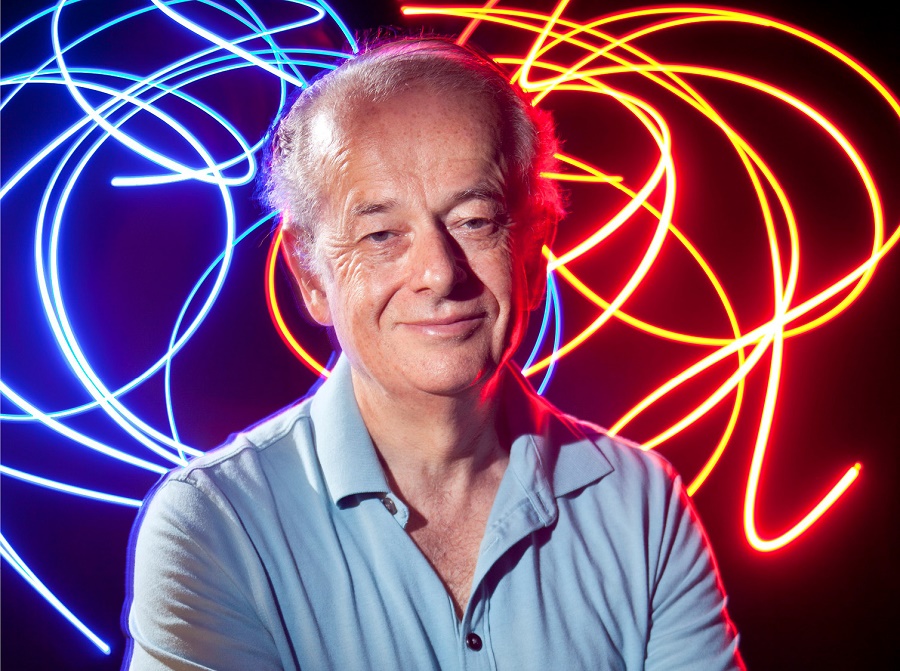About
27 January 2021
The Optical Society Awards Federico Capasso the 2021 Frederic Ives Medal/Jarus W. Quinn Prize
WASHINGTON -- The Optical Society, the leading global professional association in optics and photonics, today announced that the 2021 Frederic Ives Medal/Jarus W. Quinn Prize will be presented to Federico Capasso, John A. Paulson School of Engineering and Applied Sciences, Harvard University, USA. Capasso is honored for seminal and wide-ranging contributions to optical physics, quantum electronics and nanophotonics.
"Federico Capasso is a true pioneer and distinguished leader in the field of optics and photonics,” said 2021 OSA President Connie Chang-Hasnain, Whinnery Chair Professor Emerita of EECS at University of California, Berkeley, USA. “His contributions to the demonstration of the quantum cascade laser along with many other accomplishments are befitting of the prestigious Ives Medal/Quinn Prize.”

Federico Capasso received his Ph.D., summa cum laude, from the University of Rome, Italy, and after doing research in fiber optics at Fondazione Bordoni in Rome, joined Bell Labs in 1976. He was made a Distinguished Member of Technical Staff in 1984 and a Bell Labs Fellow in 1997. In addition to his research activity, Capasso held several management positions at Bell Labs including Head of the Quantum Phenomena and Device Research Department and the Semiconductor Physics Research Department and Vice President of Physical Research. He joined Harvard University in 2003.
Capasso has made major contributions to the study of quantum electrodynamical forces known as Casimir forces. He used the Casimir effect (the attraction between metal surfaces in vacuum due to its zero point energy) to control the motion of MicroElectroMechanical Systems (MEMS). He demonstrated novel devices (Casimir actuators and oscillators), setting limits to the scaling of MEMs technology and with his collaborators Jeremy Munday and Adrian Parsegian was the first to measure a repulsive Casimir force.
Capasso's current research in quantum electronics deals with very high power continuous-wave QCLs, the design of new light sources based on giant optical nonlinearities in quantum wells such as widely tunable sources of terahertz radiation based on difference frequency generation and with plasmonics. He and his group at Harvard have demonstrated a new class of optical antennas and plasmonic collimators that they have used to design the near-field and far-field of semiconductor lasers, achieving ultrahigh intensity deep subwavelength size laser spots, laser beams with greatly reduced divergence and multibeam lasers. His group showed that suitably designed plasmonic interfaces consisting of optically thin arrays of optical nano-antennas lead to a powerful generalization of the centuries-old laws of reflection and refraction. They form the basis of "flat optics" based on metasurfaces.
He is a member of the National Academy of Sciences and the National Academy of Engineering, Academia Europaea and Accademia dei Lincei. He is a Fellow of numerous societies including OSA, American Academy of Arts and Sciences, The Institute of Physics, SPIE, IEEE and the American Physical Society. His many awards and honors include the OSA R. W. Wood Prize, Matteucci Medal, Accademia Nazionale delle Scienze, detta dei XL, Guglelmo Marconi Science Award, UNICO, Rumford Prize, American Academy of Arts and Science, Gold Medal of SPIE, European Physical Society Quantum Electronics and Optics Award, Humboldt Research Award and the Arthur Schawlow Prize in Laser Science, American Physical Society.
First presented in 1929, the Frederic Ives Medal recognizes overall distinction in optics, and is the highest award of the Society. The medal was endowed by Herbert E. Ives, a distinguished charter member and 1924 – 1925 OSA President, to honor his father’s pioneering contributions to color photography, three-color process printing, and other branches of applied optics. The Quinn Prize was added in 1995 in recognition of OSA's first Executive Director, Jarus W. Quinn.
About The Optical Society
The Optical Society (OSA) is dedicated to promoting the generation, application, archiving, and dissemination of knowledge in optics and photonics worldwide. Founded in 1916, it is the leading organization for scientists, engineers, business professionals, students, and others interested in the science of light. OSA’s renowned publications, meetings, online resources, and in-person activities fuel discoveries, shape real-life applications and accelerate scientific, technical, and educational achievement.
Media Contact
